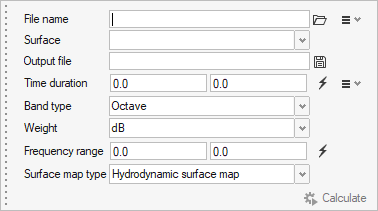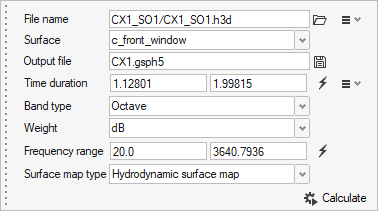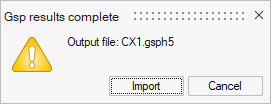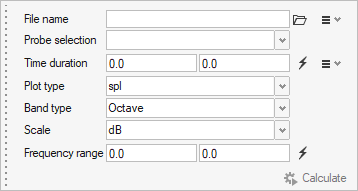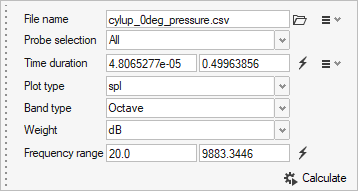Perform General Signal Processing for Computational Aeroacoustics
Process a surface output or point probe file created from data as a part of the General Signal Processing (GSP) workflow that is utilized for Computational Aeroacoustics (CAA).
Examples of this workflow include the post-processing of a rotating fan and greenhouse noise simulations. You may process time-dependent point or surface data to interpret the noise source from aerodynamic and aeroacoustic simulations.
Hydrodynamic dB Map Creation
The purpose of the GSP workflow is to generate hydrodynamic surface dB maps from a time-dependent surface pressure, written in HyperView (.h3d) format.
The source .h3d file must be created directly from the solver or converted from merged ENSIGHT data (.case files) via the HVTrans application. The source file should contain the time-dependent pressure for one or more surfaces at a high enough frequency and long enough duration to support the requested frequency range of interest.
Using the source time-dependent pressure map, you can obtain the Sound Pressure Level (SPL) in decibels (dB) or weighted levels to represent human hearing more closely in dB(A) or dB(C). The SPL can be obtained for a single range of frequencies [fmin, fmax] represented at the center of the broadband, or optionally, weighted for each fractional octave band across the requested frequency spectrum. The SPL is obtained by computing the Fast Fourier Transform (FFT) of the time dependent pressure signal, modifying the resultant power spectral density and logarithmically rescaling, accounting for the reference pressure of air for each element present on the surface of interest. The value for SPL is computing by using the relationship shown in Equation 1. Figure 1 provides an example of the data that is utilized and created during the GSP workflow.
The above equation represents the sound pressure level of ith element on a given surface, using Pref=2.0e-5Pa. Where SPL has units of decibels (dB).
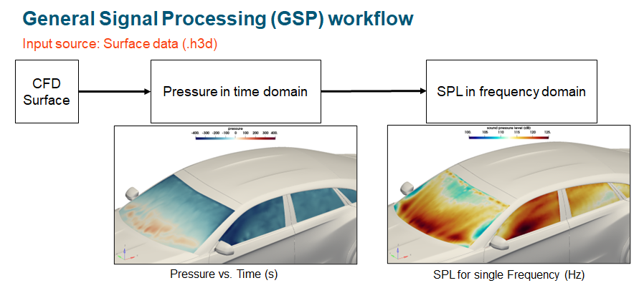
Figure 1. Diagram showing the process for creating and post-processing boundary surface data
Band Filtered Transient Animation Summary
Provides a workflow to generate a Band Filtered Transient Surface Animation (BAFA) from a time-dependent surface pressure source file, written in HyperView (.h3d) format.
Utilizing the same source input file as described in the hydrodynamic dB map summary, you can generate a BAFA according to the frequency range of interest. As in the hydrodynamic map process, the source file should contain the time-dependent pressure for one or more surfaces at a high enough frequency and long enough duration to support the requested frequency range of interest. If previously computed, or with the Surface Output Type option: Both, the BAFA will utilize the FFT and filter the time domain data for output.
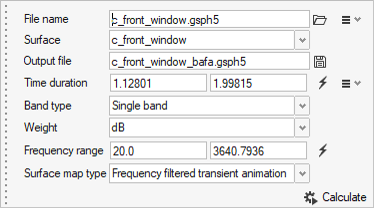
Figure 8. Input dialog for GSP (BAFA focus)
Point Probe Summary
Provides a workflow to compute noise levels from point probe measurement files using .csv files created directly from ultraFluidX.
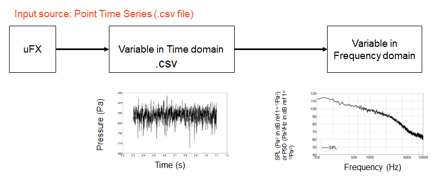
Figure 9. Diagram showing the process for creating and post-processing Point Probe data
Batch Automation of GSP Surface Workflow
The GSP workflow can be utilized by running an automation script that generates the hydrodynamic dB map or BAFA without the user interacting with the GUI.
The batch automation can be accessed within the same distribution as the GUI (HWDesktop – HMCFD) from the command line. For example:
"<install_directory> \hwdesktop\hwx\plugins\hwd\profiles\HyperworksCfd\hwcfdGsp.bat" gspParams.jsonWhere the .json file contains the attributes that were provided in the GUI workflow, referenced above, and stored as follows (by default, in the application launch directory).
{"gspArgs": {
“resultFilePath": "01_windshield_pass.gsph5",
"outGspFname":"01_windshield_pass_octave.gsph5",
"partName": "Glasses_windshield_pass",
"resultsName": "Glasses_windshield_pass",
"useCellData": true,
"dataArrayName": "pressure",
"timeRange": [0.29910001, 1.1],
"bandType": "octave",
"scale": "dB",
"frequencyRange": [20.0, 11251.486],
"surfaceMapType": 2,
"exportData": 2,
"exportStride": 100,
"exportDataFilename": "windshield_pass_pressure.mp4",
"exportResultType": 1}
"fftArgs": {
"nperseg": 4096,
"noverlap": 2048,
"window": "hann"}}
